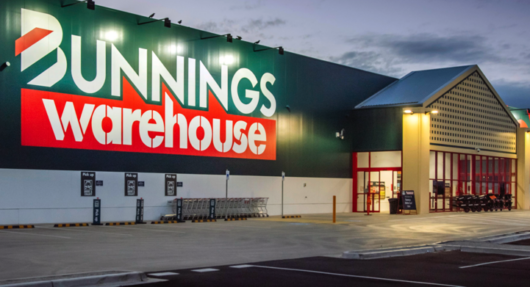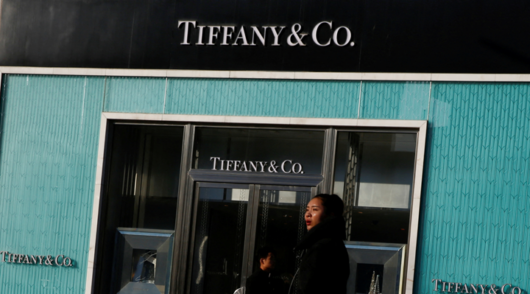As retailers gear up for peak season, many are fine-tuning sales strategies as shoppers’ spending capacity and preferences change. That includes addressing the ongoing impact of cost of living pressures on spending behaviours and variations across categories and age groups.
The newly released Cost of Living Insights from CommBank iQ explores how economic uncertainty is flowing to people’s wallets. An analysis of de-identified transactions from approximately 7 million Australians reveals that while discretionary spending is up 1.3% year-on-year, inflation continues to be higher at 2.8 per cent ii.
However, behind the headline numbers sits a range of spending patterns. For example, general retail recorded the strongest growth among discretionary categories, rising by 5 per cent. At a sub-category level, there are even bigger movers, which present opportunities for some retailers and heightened competition for others.
By looking more closely at spending changes, retailers can gain a more vivid picture of what’s driving customer behaviours. Here are just some of the trends.
Consumers attracted to value and convenience
The year-on-year growth in general retail purchases has bucked recent trends. It’s the only discretionary sector where spending has grown above inflation. It’s also ahead of other retail areas like household goods (-2 per cent) and apparel (-2.5 per cent).
As a CommBank iQ spending category, general retail covers more than 10 sub-segments, from pet, discount and department stores to online marketplaces. It was a 20 per cent uplift in spending on online marketplaces that underpinned the growth in general retail. The data showed an increase in customer numbers and more visits to online marketplaces; spending habits that have the potential to remain sticky.
Discount and variety stores also experienced 6 per cent higher spending. When viewed alongside the gravitation to online marketplaces, the data suggests consumers may be seeking more affordable retail options. An 18 per cent yearly fall in spending on luxury apparel boutiques also supports this trend.
The shift online may also indicate a preference for convenience, which extends to other areas of people’s shopping too. For example, spending on online food delivery was 6 per cent higher than a year earlier.
Spending divided across the generations
Cost of living pressures are impacting Australians differently, best illustrated when evaluating spending by age. At the highest level, under-40s are winding back overall spending, while spending growth is running higher than inflation for over-60s.
Stepping even further out by age reveals the contrast. Under 30s have cut back substantially in retail categories like apparel (-8 per cent) and department stores (-15 per cent). Conversely, over 70s have lifted apparel purchases by 5 per cent and department store spending by 14 per cent.
Commenting on the impact, Wade Tubman, CommBank iQ’s head of innovation and analytics, said, “Younger Australians are still making sacrifices as they face lingering cost of living pressures. Many are eating out less, buying fewer clothes and prioritising in-home entertainment like streaming. However, higher spending on gyms and fitness tells us wellness is still a focus.”
Another trend influenced by age is declining spending on children’s items. Here, CommBank iQ data indicates that as parents face increasing education and childcare expenses, there’s less room for things like specialty children’s apparel, where spending has dipped by 9 per cent year-on-year.
Consumers spend less (time) out
While spending on online food delivery providers was up, consumers have cut back on eating and drinking out. In the September quarter, spending on dining, cafes and quick-service restaurants grew below inflation. Spending in pubs and wineries also declined. Again, this is different for older Australians, where over 70s lifted spending on eating out by 8 per cent.
Spending on supermarkets grew by only 1 per cent in another sign of either value-orientation or people buying fewer items. At the same time, local fresh food businesses such as butchers, bakeries and fruit and vegetable stores saw spending growth, driven higher by older consumers.
It’s important to note that high-level trends don’t always capture the full picture. That’s because different customers are adjusting their spending in very different ways, so the deeper you go, the more insight that’s revealed.
For retailers seeking to capture growth opportunities, it is important to understand your customer base and adapt in step with changing customer spending behaviour. Currently, this may include emphasising affordability to younger customers and maximising spend potential with older generations.
Read the analysis here.
To learn more about how your retail business can unlock value from up-to-date customer behaviour analysis and market movements, visit commbank.com.au/commbankiq
About Cost of Living Insights:
CommBank iQ uses the de-identified dataset of Australia’s largest bank to evaluate changes in cost of living and how Australians respond. The analysis is based on transactions from approximately 7 million Australians scaled to represent the population. All figures sourced from CommBank iQ as at 30 September 2024, and compare the period from July to September 2024 to the corresponding period in 2023, unless otherwise stated. All figures based on spend per capita, rather than total consumption.
Things you should know:
i Australian Bureau of Statistics. Consumer Price Index, Australia. October 2024
ii The CommBank iQ Cost of Living Insights data compares spending in the September quarter 2024 to the same quarter in 2023. Inflation figures refer to the annual change to the September quarter 2024.
This article is provided by CommBank iQ, a joint venture between Commonwealth Bank of Australia ABN 48 123 123 124 (Commonwealth Bank) and The Quantium Group Pty Limited ABN 45 102 444 253 and is based on information available at the time of publishing. For the full disclaimer, please refer to the full report here.
This report is intended to provide general information of an educational nature only. It does not have regard to the financial situation or needs of any reader and must not be relied upon as financial product advice. You should consider seeking independent financial advice before making any decision based on this information. The information in this report and any opinions, conclusions or recommendations are reasonably held or made, based on the information available at the time of its publication but no representation or warranty, either expressed or implied, is made or provided as to the accuracy, reliability or completeness of any statement made in this report.
Commonwealth Bank of Australia ABN 48 123 123 124 AFS






